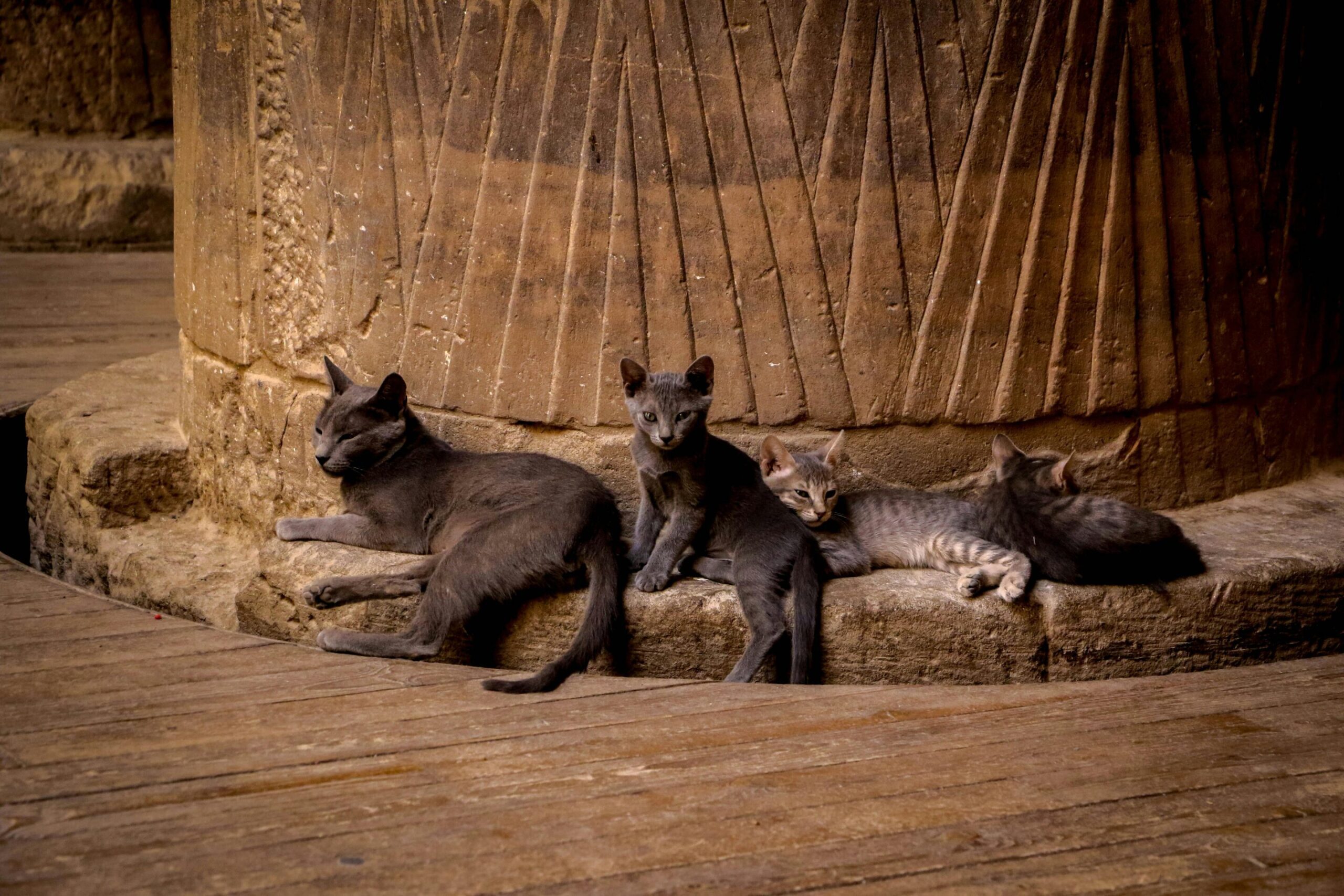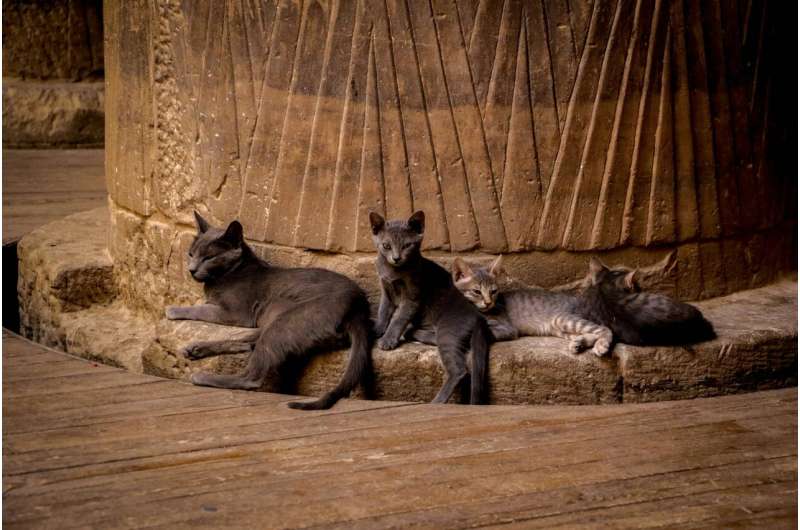

EU researchers are testing DNA from archaeological cat remains to help unravel the tale of cat domestication. It probably will not surprise cat owners, familiar with the enigmatic and independent nature of their beloved pets, to know that scientists have found the feline domestication process to be rather unconventional in comparison to other animals.
“Cats are really peculiar in a way because they have adapted a lot to humans, but without really changing their nature,” says Dr. Claudio Ottoni, a paleogeneticist from the University of Rome Tor Vergata, in Italy.
“Even physically, a wild cat and a domestic cat are not that different. Cats have been very successful evolutionarily and adapted very well to the human niche, which is fascinating.”
Ancient DNA
Ottoni, who uses ancient DNA as a tool to reconstruct the past of human and animal populations, is heading up an international EU-funded research project called Felix to shed further light on the history of the relationship between cats and humans.
The Felix research team—which includes leading experts in paleontology, archaeozoology and molecular biology from museums and academic institutes across Europe—is analyzing more than 1,300 archaeological samples of cats drawn from some of the most important museum collections.
The samples come from more than 80 archaeological sites in Europe, Africa and Southwest Asia, and range from before 10,000 BC to the 18th century. By extracting the genetic data from these ancient cat remains, the researchers aim to reconstruct the unique biological and environmental influences that shaped cat domestication and trace the appearance of domestic cats across the globe.
High-tech analysis
Working in specialized facilities to minimize the risk of DNA contamination, the researchers are testing the cat remains with cutting-edge molecular biology techniques that allow them to extract and analyze genetic information.
Tiny fragments of bone and teeth are pulverized into a few milligrams of powder from which the DNA is extracted and converted into “genomic libraries”—a collection of overlapping DNA fragments that together make up the total genomic DNA of a single organism.
The genetic information is then unlocked using powerful next-generation sequencing—a gene sequencing technology that makes it possible to process large amounts of data very quickly. In this, the researchers are supported by the computational infrastructure of Cineca, one of Europe’s large-scale research facilities and among the most powerful supercomputing service providers in the world.
This advanced technology is allowing researchers to study biological systems at a level that was previously impossible. It will also make it easier to spot patterns of genetic mutation over time that indicate the different stages in cat domestication.
“This is how we are able to tell whether an ancient bone belonged, for example, to a European wildcat or an African or Near Eastern wildcat, which is the ancestor of modern domestic cats,” says Ottoni.
Fishing for clues
The researchers are also using sophisticated techniques based on the chemical analysis of collagen, the most abundant protein in bones, to look at how cats’ diets evolved over time. For example, when did they begin to eat fish, thanks to fishermen feeding them scraps from their haul? This helps to build a picture of how cat domestication developed.
For many years, scientists generally believed that cat domestication began in Ancient Egypt thanks to the widespread iconography of cats and the discovery of mummified cats created as offerings to the gods.
However, in 2004, the discovery of the ancient burial site of a young man and a cat in Cyprus—in the Neolithic village of Shillourokambos—suggested that cats may already have been domesticated as early as 11,000 years ago.
The DNA analysis being carried out by Ottoni and his colleagues hopes to clear up this mystery. So far, results lead them to believe that Europe’s domestic cats began their bond with humans in North Africa, possibly traveling to Europe with Romans trading across the Mediterranean Sea.
“If everything started around 10,000 years ago, we would expect to see cats introduced into Europe soon after, as we find with pigs and other animal domesticates,” said Ottoni. “But our DNA analysis shows that cats in Europe were still wild cats—none are genetically originated from the domesticated strain of cat until much later, around 2,500 years ago.”
But how these different centers of cat domestication interacted cannot be resolved until analysis of the genome of ancient cats is complete. This is the blueprint that carries all the information on an organism’s growth, development and function.
The secret life of cat mummies
For the final two years of the study, the researchers will be dissecting the genetic secrets of their large collection of Egyptian cat mummies. They want to compare the DNA of these cats with modern domestic cats, and with that of ancient cat remains already analyzed in Europe.
The research team will be working on Egyptian cat mummies sourced from different collections across Europe, including from the Natural History Museum in Vienna, the Musée des Confluences in Lyon, the Natural History Museum and the British Museum in London, as well as the Natural History Museum in Warsaw.
Professor Wim Van Neer, a renowned Belgian archaeozoologist based at the Royal Belgian Institute of Natural Sciences in Brussels, is closely involved in this part of the research. He personally excavated mummified cats in Egypt and has hands-on experience that further informs his research.
“When I excavated six complete cat skeletons in a 6,000-year-old Egyptian tomb, I was able to show that these animals were tamed, but not fully domesticated,” he said. “These finds predate the earliest evidence of domestic cats in pharaonic Egypt by more than 2,000 years. I still wonder if these early attempts to control cats eventually led to domestication.”
One of the challenges faced by the researchers is the possible damage done to the DNA due to the mummification process. Van Neer hopes that the advanced sequencing technology now available to them will help overcome this potential hurdle and reveal further details of the domestic cat’s fascinating journey from wild animal to couch companion.
“I see how much people want to know about their cats. This project is shedding light on how the human relationship with cats started—and where,” said Ottoni.
Provided by
Horizon: The EU Research & Innovation Magazine
Citation:
Tracing the journey from Egyptian cat mummies to modern house pets (2024, November 4)
retrieved 5 November 2024
from https://phys.org/news/2024-11-journey-egyptian-cat-mummies-modern.html
This document is subject to copyright. Apart from any fair dealing for the purpose of private study or research, no
part may be reproduced without the written permission. The content is provided for information purposes only.